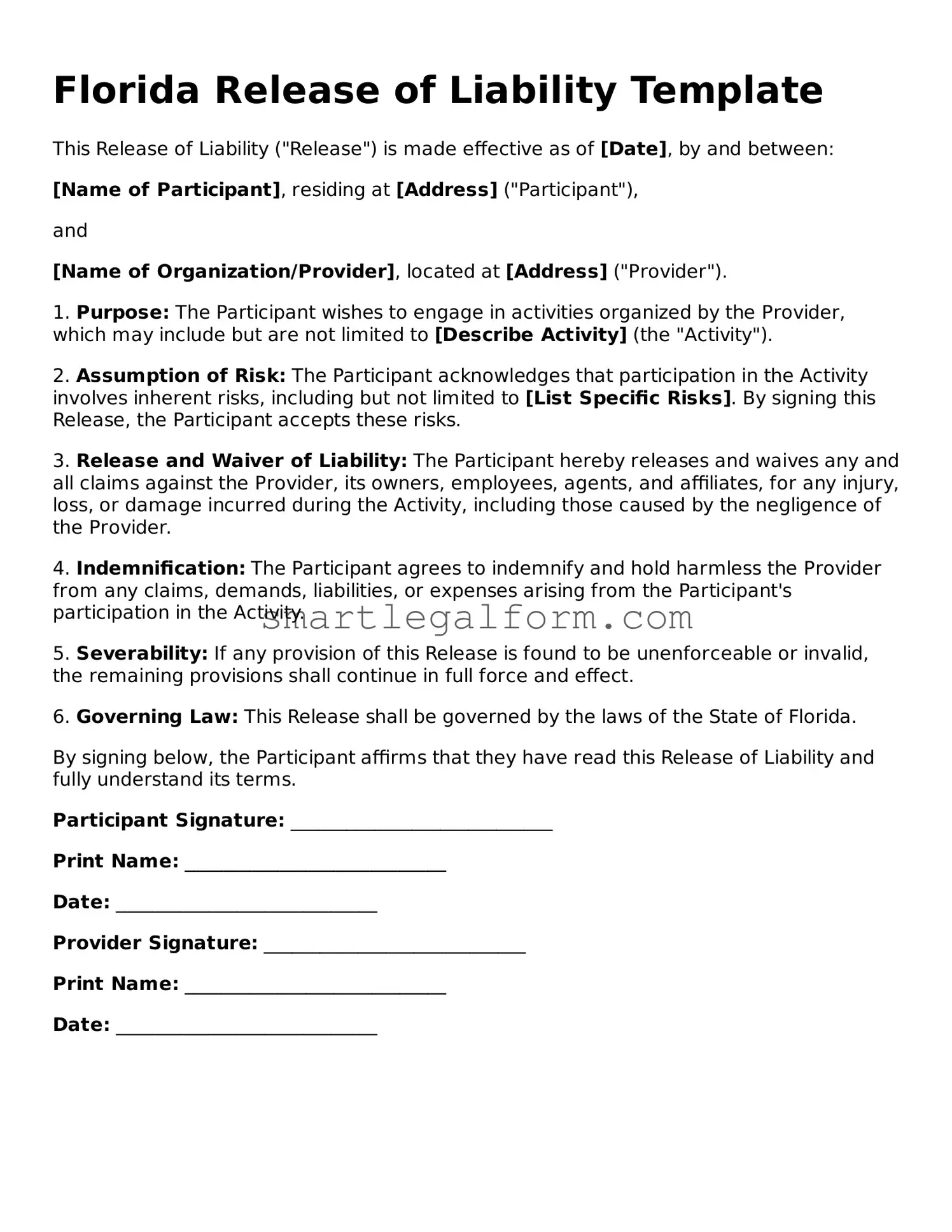Florida Release of Liability Template
This Release of Liability ("Release") is made effective as of [Date], by and between:
[Name of Participant], residing at [Address] ("Participant"),
and
[Name of Organization/Provider], located at [Address] ("Provider").
1. Purpose: The Participant wishes to engage in activities organized by the Provider, which may include but are not limited to [Describe Activity] (the "Activity").
2. Assumption of Risk: The Participant acknowledges that participation in the Activity involves inherent risks, including but not limited to [List Specific Risks]. By signing this Release, the Participant accepts these risks.
3. Release and Waiver of Liability: The Participant hereby releases and waives any and all claims against the Provider, its owners, employees, agents, and affiliates, for any injury, loss, or damage incurred during the Activity, including those caused by the negligence of the Provider.
4. Indemnification: The Participant agrees to indemnify and hold harmless the Provider from any claims, demands, liabilities, or expenses arising from the Participant's participation in the Activity.
5. Severability: If any provision of this Release is found to be unenforceable or invalid, the remaining provisions shall continue in full force and effect.
6. Governing Law: This Release shall be governed by the laws of the State of Florida.
By signing below, the Participant affirms that they have read this Release of Liability and fully understand its terms.
Participant Signature: ____________________________
Print Name: ____________________________
Date: ____________________________
Provider Signature: ____________________________
Print Name: ____________________________
Date: ____________________________
